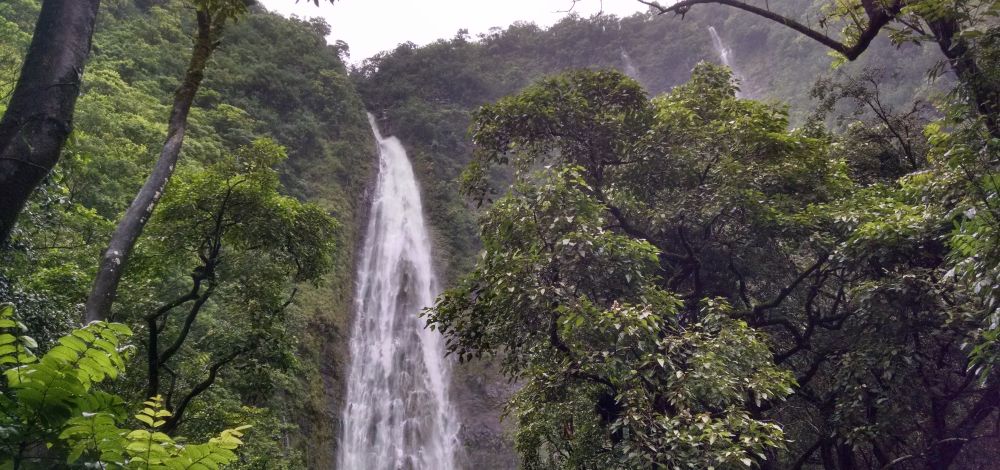
Hike the Pipiwai Trail to Breathtaking Waimoku Falls
Finding the Pipiwai Trail
Where is everybody? Early in the morning I stood in the middle of the Hana Highway, 12 miles south of the town of Hana, without a car in sight and the only noise a remembrance of waves from the Pacific Ocean crashing beside my overnight campsite. The deserted highway had lost its center line – a few hours’ drive from the buzz of resorts and surf shops – and had tapered into a sleepy country lane far removed from masses of rental cars and brake lights. This was the quiet eastern side of the 10,023 foot volcano Haleakala, the Maui of rain forest and waterfalls. Header photo by Mark Doliner; other photos by the author.
Learn tips to take good photos in Hawaii.
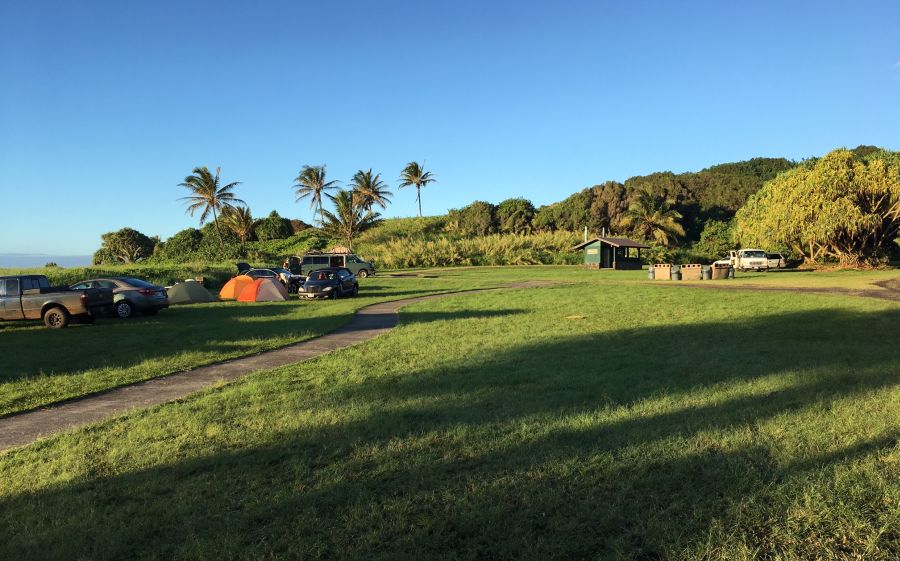
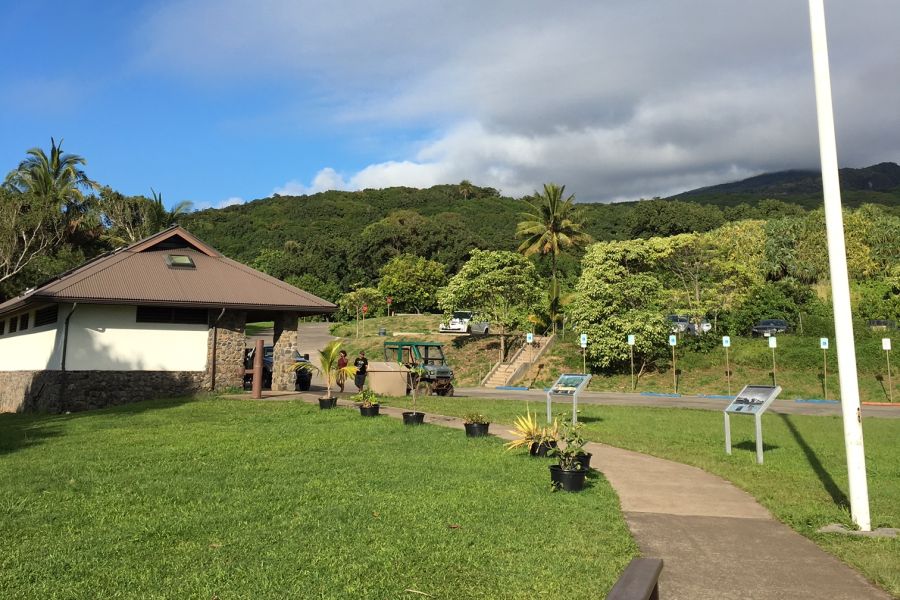
I began the day with my girlfriend and her family camped at the Kipahulu Campground, an eighth of a mile from the Pipiwai trailhead. We broke our camp in a large grassy field and exited the campground, driving to the visitor center and trailhead parking lot. The coastal visitor center had yet to open so we switched from our flip flops to hiking shoes and turned inland, away from the vaulted sky and ocean horizon and into the mountains and the leafy tunnels of the rain forest for an 800 foot climb on the 4 mile round-trip Pipiwai Trail.
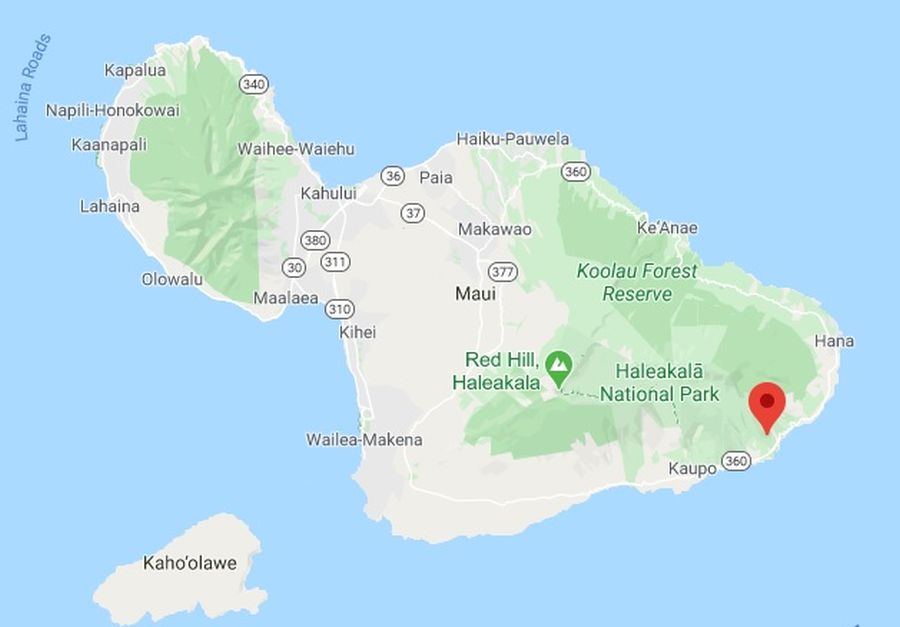
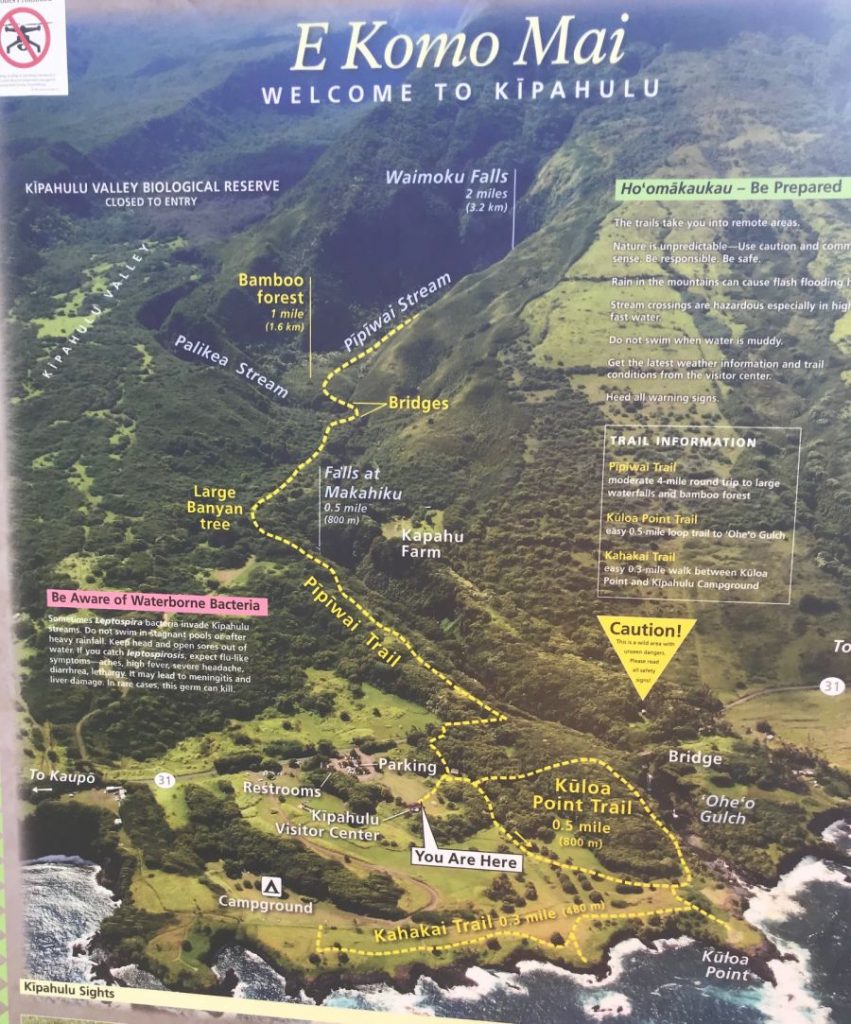
The Falls at Makahiku
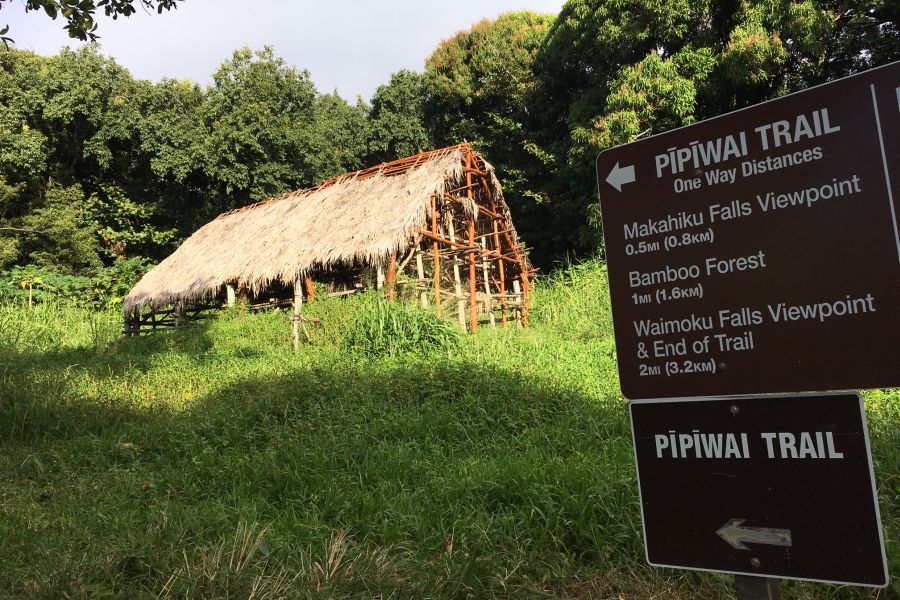
The first interpretive signs we met told of traditional Hawaiian culture and the ahupua’a, or land divisions, often marked by streams like the nearby Palikea. Along the Pipiwai trail in a clearing a barn-sized thatched roof building invoked scenes of early domestic life around ‘Ohe’o Gulch.
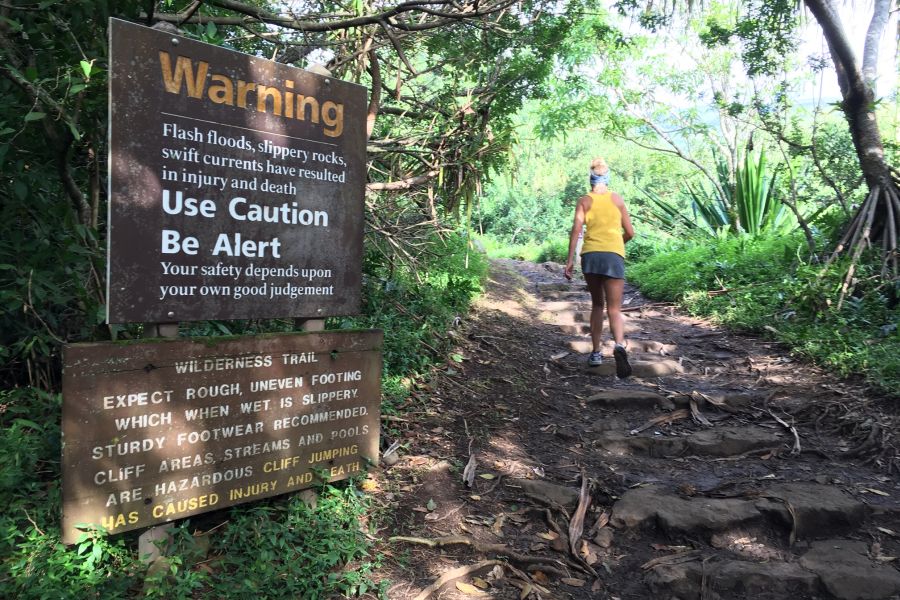
We stepped on thick tree roots exposed in the trail as if ascending a staircase from long forgotten ruins.
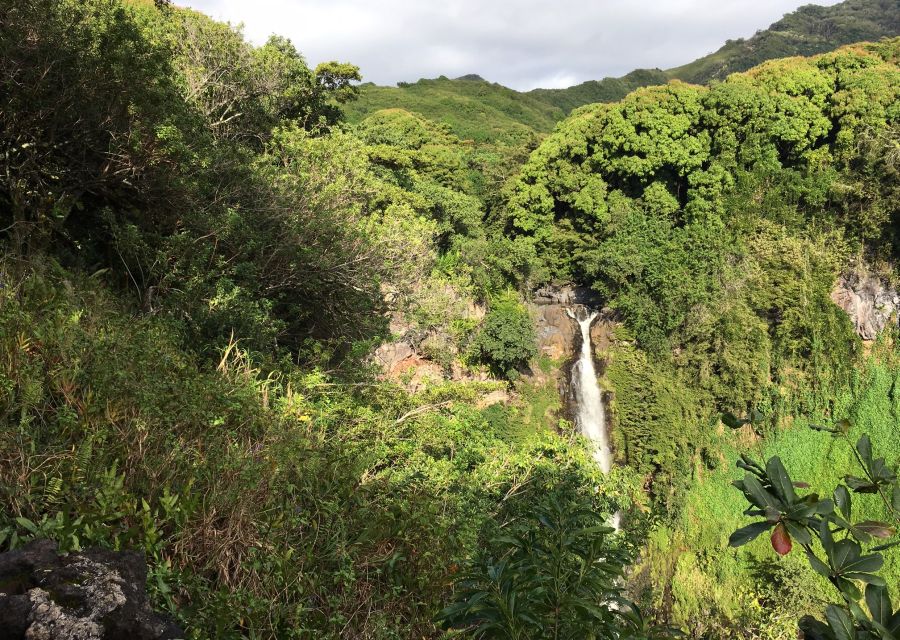
Just as I acclimated to the hallway of tropical profusion, the trail emerged from the canopy for an expansive view of a chloroplast filled canyon and the 200 foot Falls at Makahiku.
Banyan Tree
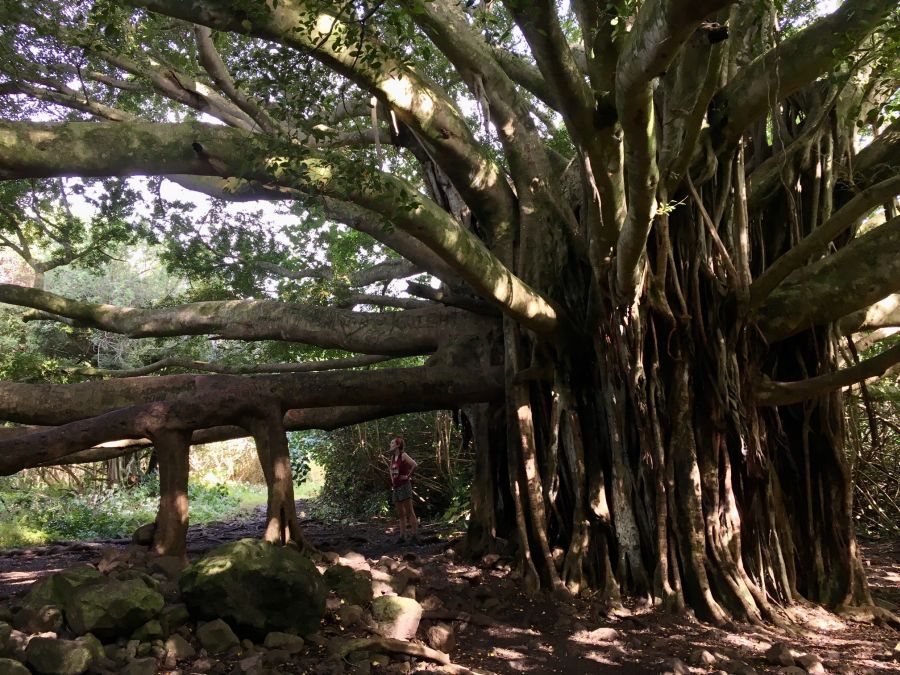
There was no passing an elder banyan tree without stopping to pay homage. Beneath the banyan the trail’s current pooled, allowing us to take the time to bask under its spacious canopy. We ducked under its horizontal branches supported by aerial roots and draped our arms over its smooth bark. I peered into the deep shadows folded into its many-ribbed trunk and gazed upwards at its pavilion-like spread.
Bamboo Forest on Pipiwai Trail
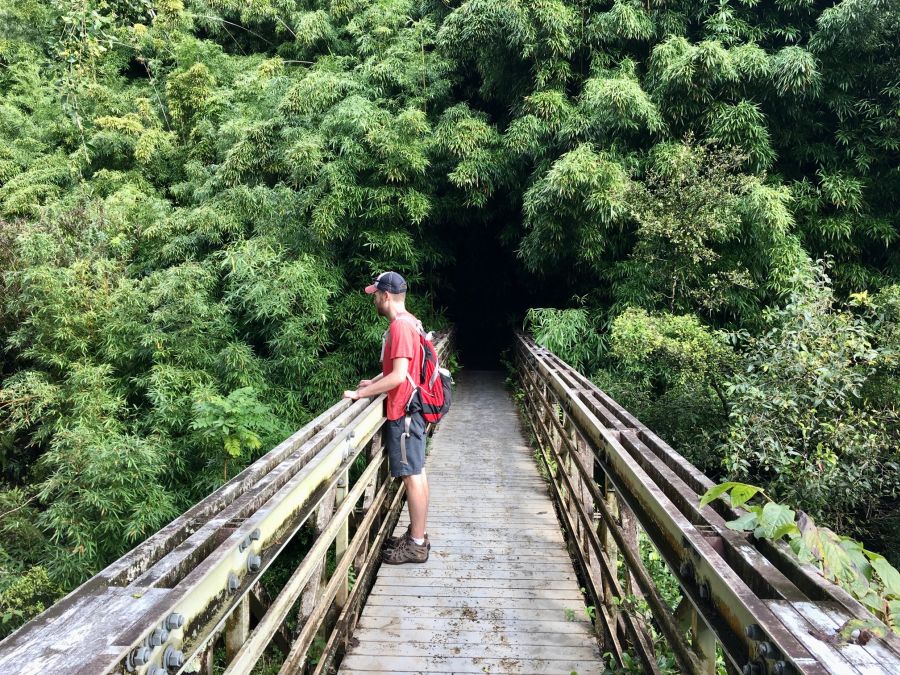
We snaked uphill dodging wide-bladed plants still wet from yesterday’s rain. Sky appeared and a canyon revealed back-to-back waterfalls, the uppermost falls plunging into a deep black pool. We crossed the stream on a steel bridge with railings suspended many feet above the coursing stream. Mid-span, we admired the falls and the plant life on the stream banks sprouting in tangled abundance.
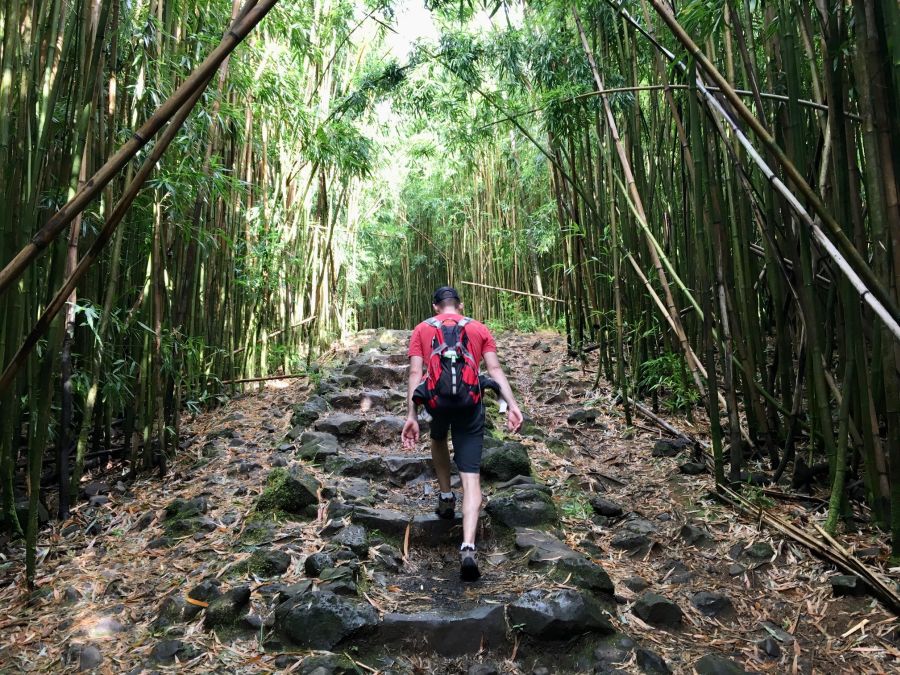
We then entered a tunnel of bamboo. The stick straight tan canes leapt like exaggerated grass blades. Some stalks canted into the trail at sharp angles while overhead a few of the taller canes leaned over the trail to weave a leafy archway.
Thoughtfully constructed boardwalks on Pipiwai Trail ferried us across stretches of standing water and slippery mud. I noticed slight movement in a pool of water. Crouching low, I peered at ‘Opae kala‘ole, a two inch species of endemic freshwater shrimp found nowhere else in the world. Known for their climbing ability, these shrimp travel out of the Pacific and have been detected upstream of 100 foot waterfalls.
Waimoku Falls
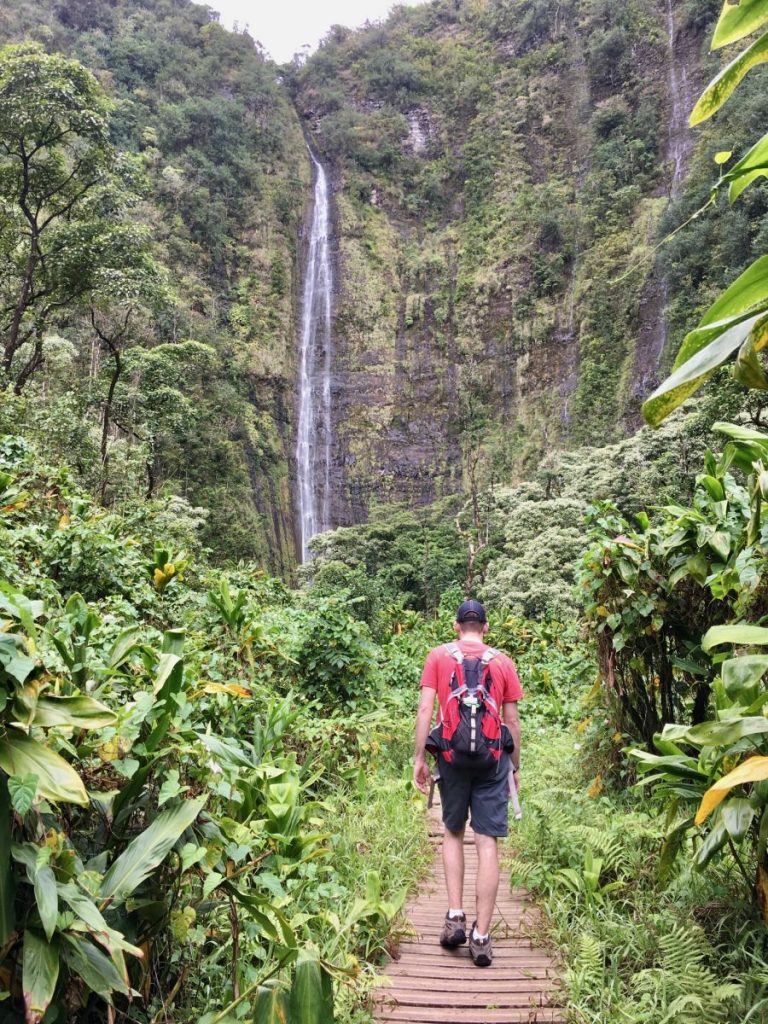
At the head of the valley the trail ended beneath a 400 foot cliff face. There it was, Waimoku Falls, all several hundred feet of water falling in slow motion suspense from earth to air to earth again.
Amid the greenery, the welcoming Hawaiian warmth, and superlative scenery I let pass the desire to stay longer, to build my own thatched roof abode in that heavenly hollow. My time under Waimoku Falls was not to be hoarded, but counted as an eternal gift. The serenity of the falls and the Pipiwai Trail were free for the taking, back to the highway and beyond.
When You Hike the Pipiwai Trail
If you want to overnight in the area consider the Kipahulu Campground. We utilized the campground to stretch our trip to East Maui into two days. With easy access to the trailhead we were able to reach the trail early in the morning while the trail remained uncrowded. Entrance fees to Haleakala National Park as of 2020: $30 per vehicle, $25 per motorcycle, and $15 per pedestrian or bicyclist.
Common rains can make the Pipiwai Trail slippery. The stream is prone to flash floods. Before you hike, check with the visitor center about trail conditions. Read and follow all signs posted by the National Park Service. Cliff jumping has proven fatal. Following signs will not only help keep you safe, but it will help conserve the integrity of the forest and conserve it for others.
What to Bring
Bring insect repellent. Wear sunscreen. And definitely carry water. Also important: Wear closed-toed shoes, preferably a pair with good traction that you don’t mind getting a little muddy.







